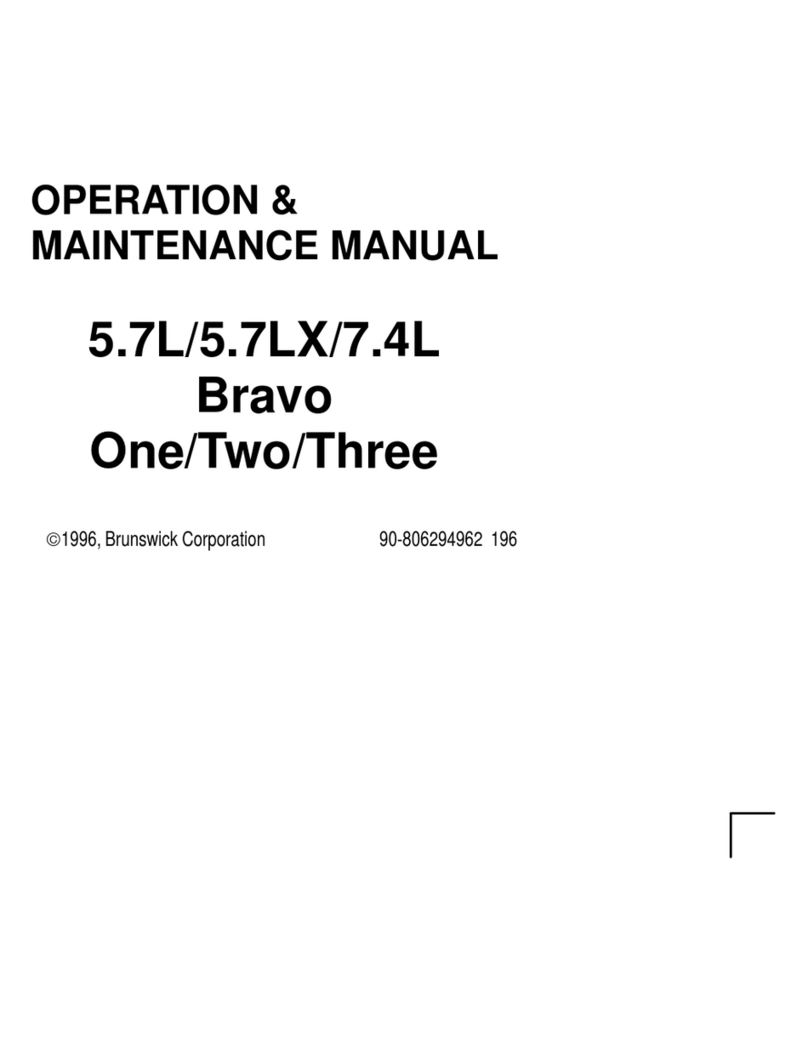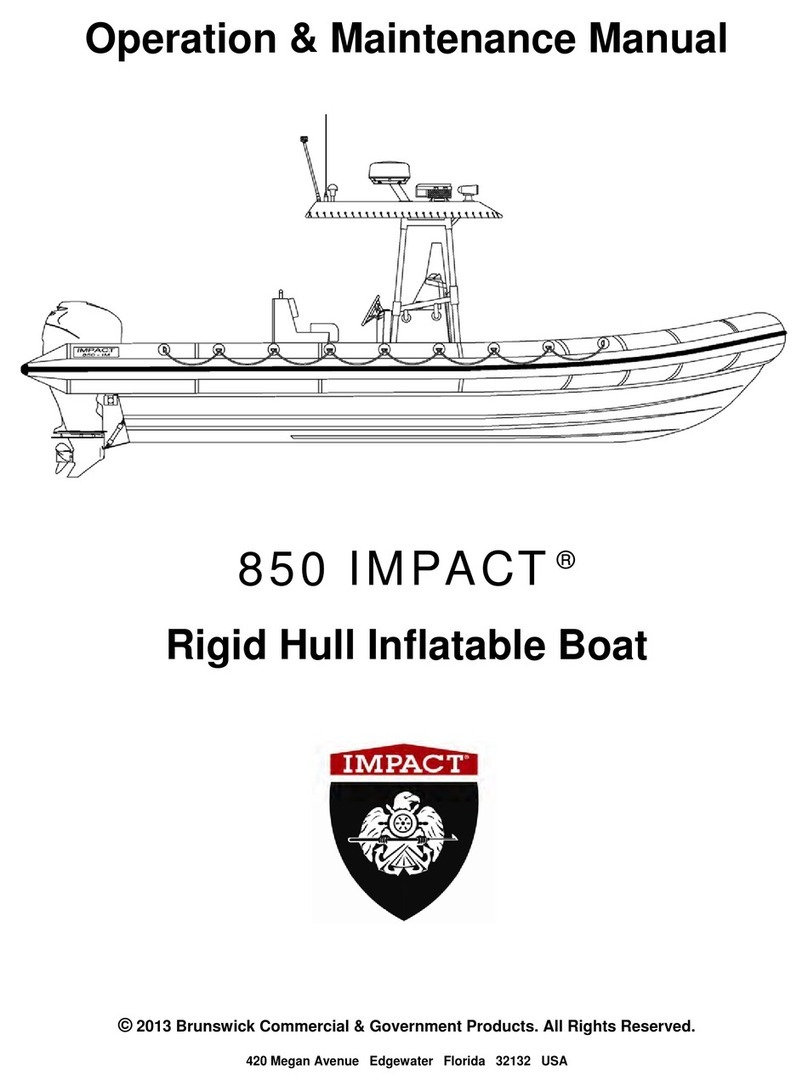
Safety Notices
This manual uses three levels of notification
for safety-related information.
The signal words CAUTION, WARNING, and
DANGER identify specific levels of hazard.
They are defined as:
When you see a safety information box in this
manual, carefully read the message before
you proceed. Take these safety warnings
seriously and be alert to the possibility of
property damage, serious injury, or death.
If you do not understand a safety warning, call
the Customer Service Department at Bruns-
wick Commercial & Government Products.
About This Manual
The information and illustrations in this man-
ual are protected by copyright. You may not
merge, adapt, translate, modify, assign, store,
reproduce, or distribute this manual’s con-
tents without written permission from Bruns-
wick Commercial & Government Products.
All rights related to this manual are reserved
and protected by Brunswick Commercial &
Government Products.
Brunswick Commercial & Government Prod-
ucts reserves the right to make changes at
any time, without notice, to features, specifi-
cations, and model availability. The right is
also reserved to change any specification,
part, or system without incurring any obliga-
tion to update older boats.
The information in this manual is based on the
latest specifications available at the time of
publication. The photographs and illustrations
might not depict actual models or equipment,
but are intended as representative views for
reference only. The continuing accuracy of
this manual cannot be guaranteed.
Certain features, parts, options, systems, and
accessories discussed in this manual might
not be found on your boat.
Be sure that the operator and at least one
other person in the boat are familiar with the
contents of this manual. A second person
should be able to safely operate the boat if
the primary operator is not available.
Make this manual available to anyone who
will operate this boat.
Warranty Information
Read the Brunswick Commercial & Gov-
ernment Products limited commercial war-
ranty statement located on the inside rear
cover of this manual. The statement explains
what is covered and what is not covered
under the warranty. The statement also
explains your responsibilities and obligations
as the boat owner.
A product registration card was shipped with
your boat. Complete this card and mail it to
Brunswick Commercial & Government Prod-
ucts using the postage-paid envelope sup-
plied. We use this information to initiate your
warranty coverage and to contact you in case
of a safety-related issue with your boat.
Include your boat’s Hull Identification Num-
ber (HIN) on the product registration card and
anytime you contact the factory. See informa-
tion about your boat’s HIN in Section 6 of this
manual.
!CAUTION
A hazard that might result in injury or
damage to property or equipment.
!WARNING
A hazard that could result in death or
serious injury.
!DANGER
A hazard that will result in death or seri-
ous injury.































